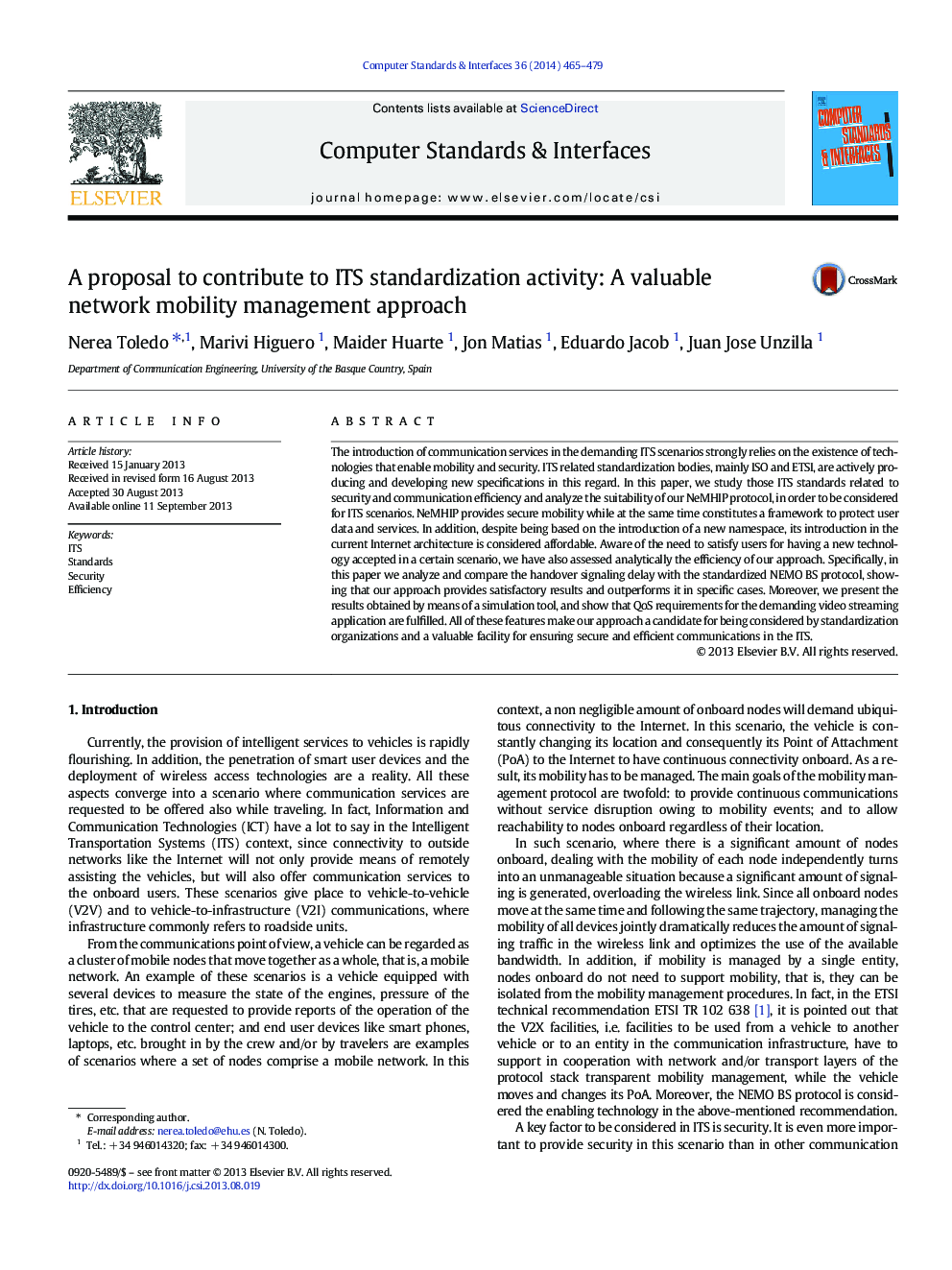| Article ID | Journal | Published Year | Pages | File Type |
|---|---|---|---|---|
| 454733 | Computer Standards & Interfaces | 2014 | 15 Pages |
•Analysis of ITS standardization activity regarding security and efficiency•Definition of a strategy for secure and efficient network mobility management•An analytical evaluation of the handover signaling delay and comparison with NEMO BS•Evaluation of QoS considering ITU-T-Y.1541 and 3GPP-TS-22.105 recommendations
The introduction of communication services in the demanding ITS scenarios strongly relies on the existence of technologies that enable mobility and security. ITS related standardization bodies, mainly ISO and ETSI, are actively producing and developing new specifications in this regard. In this paper, we study those ITS standards related to security and communication efficiency and analyze the suitability of our NeMHIP protocol, in order to be considered for ITS scenarios. NeMHIP provides secure mobility while at the same time constitutes a framework to protect user data and services. In addition, despite being based on the introduction of a new namespace, its introduction in the current Internet architecture is considered affordable. Aware of the need to satisfy users for having a new technology accepted in a certain scenario, we have also assessed analytically the efficiency of our approach. Specifically, in this paper we analyze and compare the handover signaling delay with the standardized NEMO BS protocol, showing that our approach provides satisfactory results and outperforms it in specific cases. Moreover, we present the results obtained by means of a simulation tool, and show that QoS requirements for the demanding video streaming application are fulfilled. All of these features make our approach a candidate for being considered by standardization organizations and a valuable facility for ensuring secure and efficient communications in the ITS.
